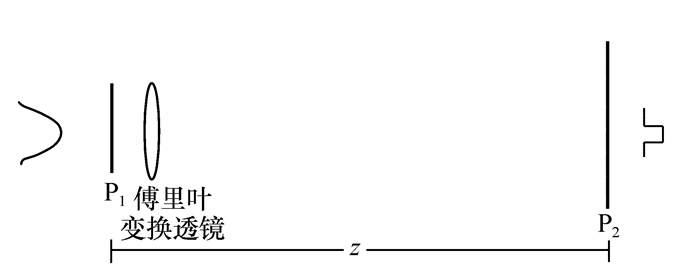Gaussian beam shaping diffractive optical element designed by Hankel transformation
-
摘要: 衍射光学元件由于可以实现对高斯光束的整形而被重视,其通常的设计方法为G-S算法,由于使用傅里叶变换运算量大、费时长,将快速汉克尔变换应用到这些算法中可以极大地提高运算速度,节省运算时间,为设计复杂的光束整形元件提供了高效、可行的方法。本文利用该种方法设计针对中心波长为775 nm、光束束腰口径为6 cm的激光器,成功设计了一个具有二阶相位的折衍混合光学元件。仅单独这一片元件,既可在距离其35 m处得到一半径为200 μm的圆形平顶光斑,均方根误差D<0.021。当抽样值取215时,在普通PC机上运行时间仅为20.05 s,大大节省了优化设计时间(整个优化设计过程往往需要几十次甚是上百次这种运算)。同时利用离子刻蚀技术加工了该折衍混合元件,并进行了实际测试,结果与设计值基本相符,整形效果较好。这种单片的整形元件不仅整形效果好,还有利于与激光器的集成,简化系统的调节。Abstract: Because diffractive optical element can shape Gaussian beam, it is attached great importance. The conventional design methods such as G-S algorithm tend to need a large amount of calculation and a long time, while Hankel transformation can increase calculation speed and save time. We successfully designed a binary refractive and diffractive optical element applying Hankel transformation into G-S algorithm. When the diffractive optical element was placed at the waist of the laser beam with the wavelength of 775 nm and the waist diameter of 6 cm, a uniform spot could be gotten at the detector plane 35 cm behind it. Its radius was 200 μm and root-mean-square error was smaller than 0.021. The calculation time was only 20.05 s with PC, saving much time during the process of optimization, in which hundreds of calculation were needed. We fabricated the refractive and diffractive optical element by ion beam etching, and tested it in lab. The experiment results agreed well with the caculation. This kind of element not only can get good spot, but also is suitable of integration with laser.
-
Key words:
- diffractive optical element /
- beam shaping /
- Gaussian beam /
- Hankel transformation
-
-
[1] [2] [3] [4] [5] [6] [7] [8] [9] [10] [11] [12] [13] [14] [15] -






 下载:
下载:









